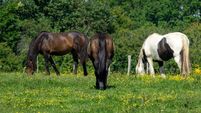Looking after creatures great and small
Conversations with him would range freely over a huge variety of topics — politics, physics, morality, and the theory of relativity. You had to keep on your toes during these sessions though, because Norman was inclined to fire a leading question at you with little or no warning. And if your answer left something to be desired, Norman could be relied on to put you right.
It’s the kind of conversation I most enjoy, when ideas and opinions flow thick and fast, and often result in quantum leaps into unknown and fascinating territory.













